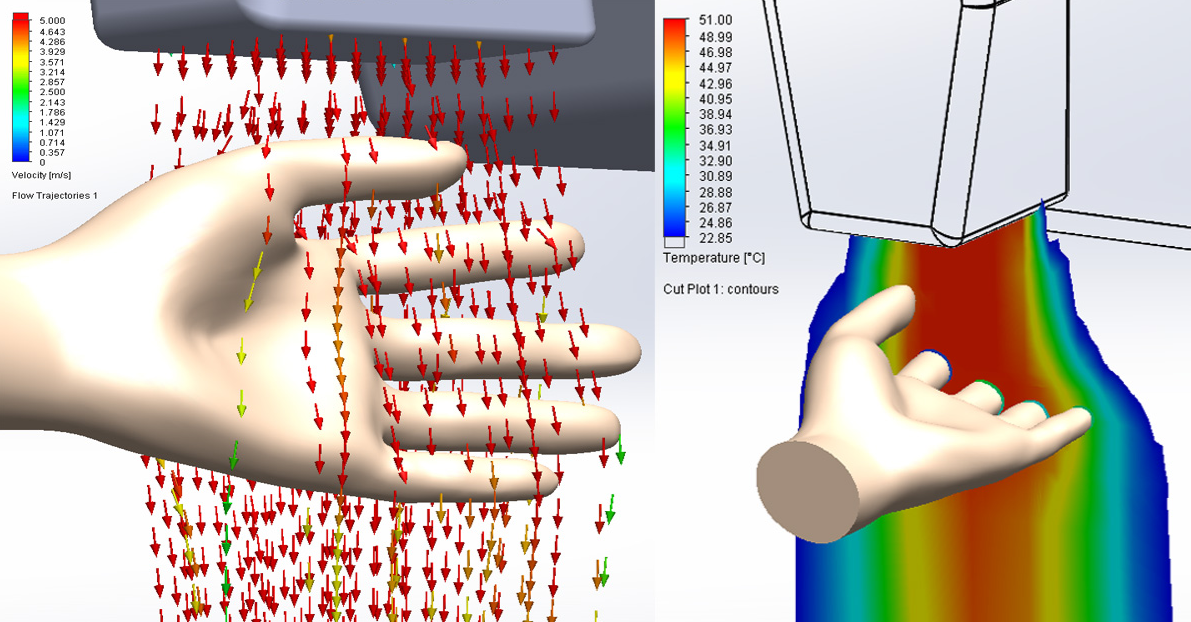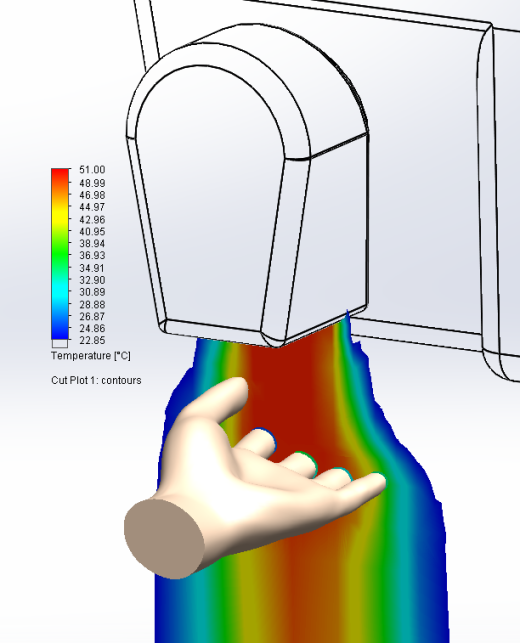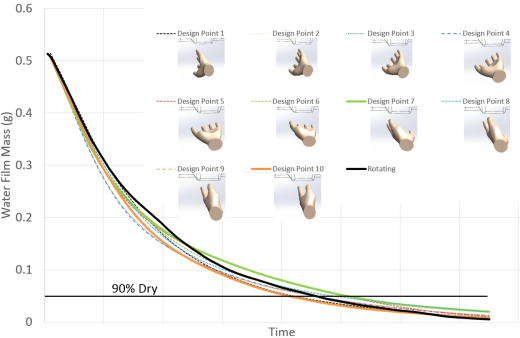What’s the Fastest Way to Dry Your Hands? Simcenter FLOEFD Explains…

I haven’t got very big hands, quite the opposite in fact, so it’s not as if I spend an inordinate amount of time standing there with my just washed hands under a convective hand dryer in a public/office toilet (who has these things at home anyway?). Whenever I do though I’m always wondering whether I’m doing it right. Should I rotate my hands, leave them in one position, if so, which position? Why didn’t they teach these things at school? I’ve got better things to do than just stand here wishing there were some paper towels to dry my hands with instead. What’s the fastest way to dry your hands under such a dryer? Just the sort of question that can be answered with Simcenter FLOEFD, MCAD embedded CFD (computational fluid dynamics) at its best.
It’s always a good idea to deconstruct a question to ensure it is answered correctly. What does ‘dry’ mean? In terms of hand drying I found out that it is common to consider a hand dry when it has lost 90% of the initial water that was clinging to the skin. Simcenter FLOEFD has a neat ‘water film’ feature where the amount of water on a surface can be simulated, including the transient effects of evaporation and condensation. A transient simulation requires an initial condition of the thickness of the water film when drying commences. I chose 25 microns (though I did find references of anything up to 100 micron water film thickness after hands are submerged and retracted from a water bath, though always good practice to shake as much excess water off first before drying).
I modelled just a single hand at 10 different orientations and tracked the reduction in water film mass over time when the hand was placed under a hot convective flow.
The relative reduction of these orientations, together with a comparison of the drying rate when the hand rotated, is shown in the graph below:
When the hand is vertically orientated it reaches the 90% dry condition fastest (Design Point 10). Both sides of the wet hand are well dried by the hot air stream that passes over both sides at once. The slowest drying (about 20% slower) is when the hand is near horizontal (Design Point 7). Here the back of the hand is very well shielded from the hot air and, although the water mass initially decreases quickly (as the palm of the hand gets all the drying) the back of the hand takes much longer.
Further insight into the drying process can be seen when animating the reduction in water film thickness over time, red represents a thick water film, blue represents dry skin:
The fingers dry first as they have a lot of surface area that is directly under the hot air stream, the palm finishing last.
I had assumed that a rotating hand would dry quickest, this was not the case. Although more hand surface area is apparent to the hot air flow in a given time period, it doesn’t stay still long enough for the water film to heat up to aid drying. Sure, in the end it’s the fastest for complete drying, but by that time you could be back at the bar enjoying your next beer.
So, next time you’re drying your hands keep them vertical, be patient and use the time to consider whether it’s more environmentally friendly to use an electric convective hand dryer or paper towels (if available).
September 27, 2023

